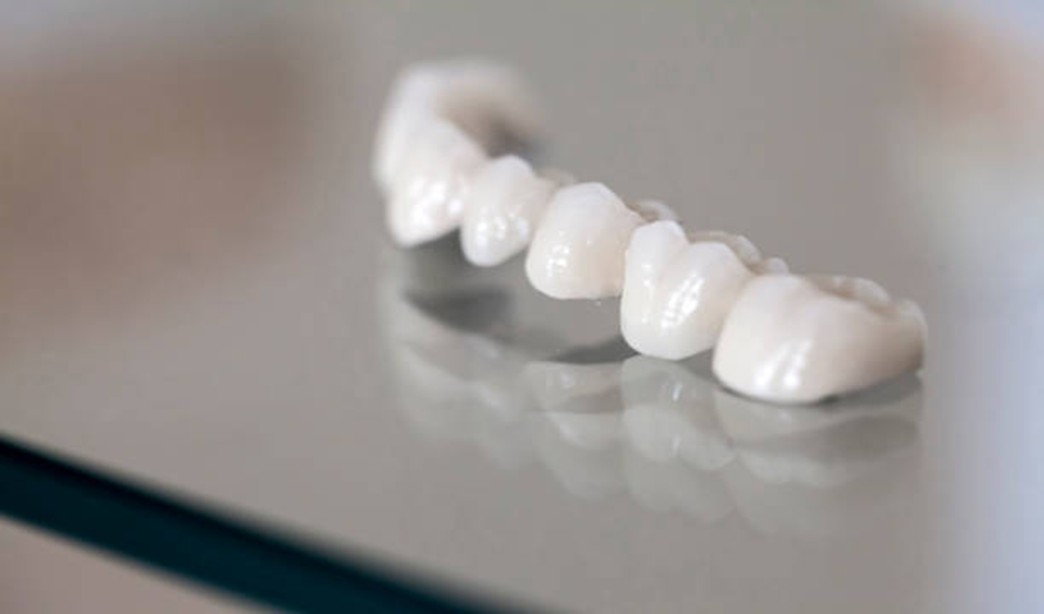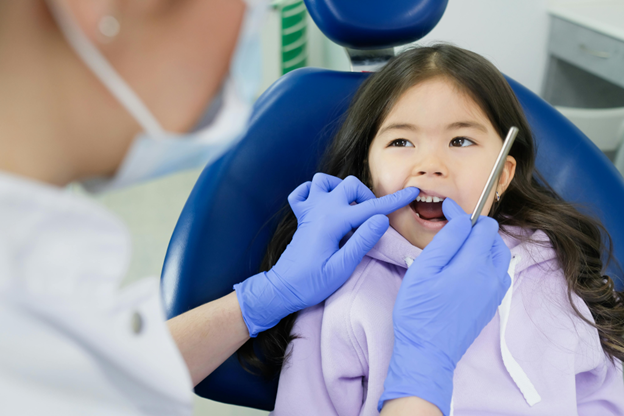PROS AND CONS OF POLYCARBONATE CROWNS IN PEDIATRIC DENTISTRY

Maintaining children’s oral health is essential for their overall well-being. When a child’s tooth is damaged, decayed, or requires restoration, the choice of crown material becomes crucial. Among the many options, polycarbonate crowns stand out for their natural look and quick application.
However, like any dental solution, polycarbonate crowns come with advantages and drawbacks. Parents and dentists must weigh these factors to determine the best approach for a child's dental health. This article explores polycarbonate crowns in pediatric dentistry, their benefits, limitations, placement procedure, and viable alternatives.
At Aakaar Dentistry, renowned as the best dental clinic in Bandra, Mumbai, Dr. Ankita Gehi, an experienced and caring dentist, is at the forefront of providing this innovative solution. We offer tailored, top-notch dental treatments for children

WHAT ARE POLYCARBONATE CROWNS IN PEDIATRIC DENTISTRY?
Polycarbonate crowns are prefabricated dental caps made from a translucent, tooth-colored plastic material. They are widely used in pediatric dentistry for restoring decayed or damaged primary teeth, especially the front teeth, where aesthetics matter most.
These crowns are designed to closely mimic the natural appearance of teeth, making them a popular choice for parents who prioritize a seamless, natural look for their child’s smile. Their preformed nature allows dentists to select and fit them with minimal adjustments, ensuring a quick and comfortable experience for young patients.
Polycarbonate crowns are temporary solutions intended to protect primary teeth until they naturally fall out. They are particularly favored in cases where aesthetics, time efficiency, and cost are key considerations.

When Are Polycarbonate Crowns Recommended for Pediatric Patients?
Polycarbonate crowns are used in several scenarios:
- Extensive Tooth Decay. When a tooth is severely decayed and cannot be restored with traditional fillings, polycarbonate crowns offer a protective and aesthetic solution.
- Fractured or Chipped Teeth. Children are prone to accidents that can damage their teeth. Polycarbonate crowns help restore the shape and functionality of fractured teeth.
- Post-Pulp Therapy. After procedures like pulpotomy or pulpectomy, where the tooth’s pulp is treated, polycarbonate crowns are used to protect the remaining tooth structure.
- Aesthetic Restorations. For visible teeth, particularly in the front, polycarbonate crowns are ideal for preserving a natural-looking smile.
- Interim Crowns. These crowns are often used as temporary solutions until permanent restorations or crowns can be placed.
The suitability of polycarbonate crowns depends on various factors, including the location of the affected tooth, the extent of damage, and the child's habits, such as grinding or clenching teeth.
Restore your child’s smile with ease! Visit our Pediatric Dentistry in Bandra clinic for expert advice and care.
Pros of Polycarbonate Crowns in Pediatric Dentistry
Polycarbonate crowns offer several benefits that make them a popular choice in pediatric dentistry:
- Aesthetic Appearance. The translucent material closely resembles natural teeth, providing a pleasing and realistic look. This makes them an excellent option for anterior restorations.
- Quick and Convenient Application. Since these crowns are preformed, they can be placed in a single visit with minimal adjustments, saving time for both the dentist and the child.
- Cost-Effective. Polycarbonate crowns are more affordable than high-end options like zirconia or ceramic crowns, making them a budget-friendly choice for temporary solutions.
- Comfortable Fit. The preformed design ensures a snug and secure fit, reducing discomfort during placement and daily use.
- Durable for Short-Term Use. While not as strong as other materials, polycarbonate crowns provide adequate protection for primary teeth until they naturally exfoliate.
- Biocompatibility. These crowns are safe for use in children, with minimal risk of adverse reactions.
The combination of aesthetics, affordability, and ease of use makes polycarbonate crowns a practical solution for many pediatric dental cases.
Cons of Polycarbonate Crowns in Pediatric Dentistry
Despite their advantages, polycarbonate crowns come with certain limitations:
- Limited Durability. Polycarbonate crowns are less durable than stainless steel or zirconia crowns, making them unsuitable for molars or teeth subject to heavy chewing forces.
- Susceptibility to Wear and Tear. Over time, these crowns may wear down, especially if the child has habits like teeth grinding or clenching.
- Temporary Nature. These crowns are not intended for long-term use, as they are designed to last until the primary tooth is naturally replaced.
- Material Sensitivity. Some children may experience mild irritation or sensitivity to the material used in polycarbonate crowns.
- Not Ideal for High-Stress Areas.Due to their lower strength, polycarbonate crowns are not recommended for posterior teeth, which bear the brunt of chewing forces.
Understanding these drawbacks helps parents and dentists make informed decisions based on the specific needs of the child.
Procedure for Placing Polycarbonate Crowns
The process of placing polycarbonate crowns is straightforward and minimally invasive:
- Initial Assessment.The dentist evaluates the damaged or decayed tooth to determine if a polycarbonate crown is the most suitable solution.
- Tooth Preparation. The tooth is cleaned and shaped to remove decay and create a stable base for the crown.
- Crown Selection. A preformed polycarbonate crown is chosen to match the size and shape of the affected tooth.
- Custom Adjustments. The dentist trims and adjusts the crown to ensure a perfect fit.
- Cementation. The crown is bonded to the tooth using dental cement, creating a secure attachment.
- Final Adjustments. Once the cement sets, the dentist makes any final tweaks to ensure the crown is comfortable and fully functional.
This efficient procedure minimizes discomfort and ensures a positive experience for young patients.
Take the first step towards better dental health for your child. Schedule an appointment at our Dental Clinic in Bandra and let our experts guide you!.

What Are the Alternatives to Polycarbonate Crowns in Pediatric Dentistry?
While polycarbonate crowns are effective for specific cases, other options may be better suited depending on the child’s dental needs. Some common alternatives include:
- Stainless Steel Crowns (SSC):Highly durable and ideal for molars, these crowns are the gold standard for posterior restorations.
- Zirconia Crowns: Known for their aesthetic appeal and strength, zirconia crowns are a premium option but come at a higher cost.
- Resin Veneer Crowns:These crowns combine the durability of stainless steel with a tooth-colored veneer for improved aesthetics.
- Composite Crowns:Affordable and aesthetic, but less durable than zirconia or stainless steel.
- Ceramic Crowns: Used for permanent teeth, ceramic crowns offer unmatched aesthetics and durability..
Each type of crown has distinct advantages and is chosen based on the specific requirements of the child’s dental condition.

CONCLUSION
Polycarbonate crowns are an excellent choice for restoring primary teeth in children, especially when aesthetics and cost are key considerations. Their quick placement, natural appearance, and affordability make them a go-to solution for many dentists and parents. However, their limitations, such as lower durability and temporary nature, mean they may not be ideal for all situations.
Understanding the pros and cons of polycarbonate crowns, as well as their alternatives, helps parents make informed decisions about their child’s oral health. Consulting with a skilled pediatric dentist ensures the best outcome tailored to each child's unique needs.
Got questions? We’ve got answers—let’s clear the doubts and brighten your smile!
FAQs
Yes, polycarbonate crowns are biocompatible and safe for use in pediatric dentistry.
They typically last until the primary tooth naturally falls out, usually within a few years.
While possible, they are less ideal for back teeth due to their lower durability compared to stainless steel crowns.
No, the procedure is minimally invasive and usually pain-free with local anesthesia.
Polycarbonate crowns are more affordable but less durable and aesthetic compared to zirconia crowns.

